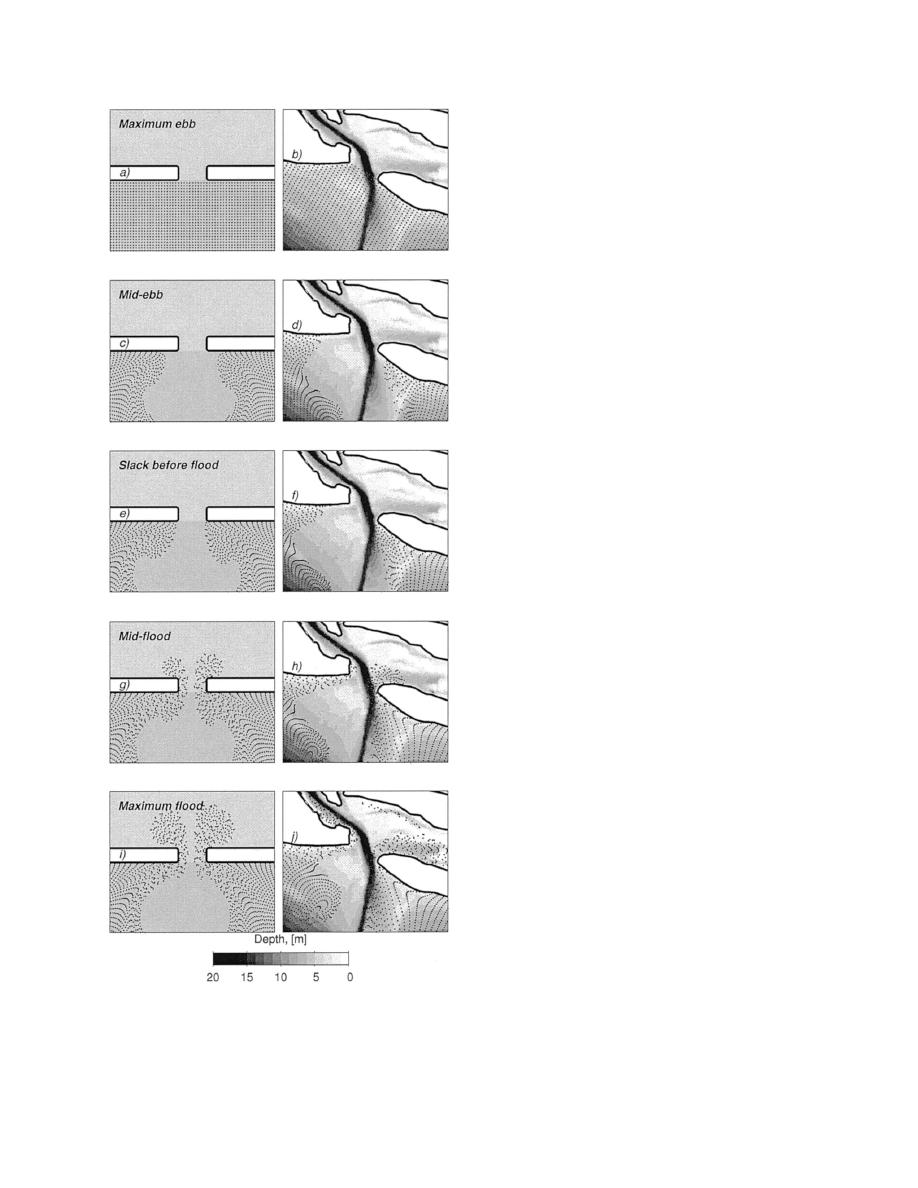
928
JOURNAL OF PHYSICAL OCEANOGRAPHY
VOLUME 33
ited minimal cross-inlet exchange during the stronger
tidal phases and further support this physical explana-
tion.
In fully three-dimensional flow, curvature generates
a secondary flow pattern (in the nz plane) caused by
an imbalance between lateral barotropic pressure gra-
dients and centrifugal accelerations [see related work
on river bends (Bathurst et al. 1977; Kalkwijk and Booij
1986), headlands (Geyer 1993; Chant and Wilson 1997),
and curved tidal channels (Seim and Gregg 1997)]. As
noted above, the lateral barotropic pressure gradients
are constant with depth, but in three dimensions, cen-
trifugal accelerations vary over the water column (max-
imum near the surface and decreasing with depth) be-
cause of the depth dependence of the streamwise ve-
locity. As the flow turns around a bend or headland (and
assuming no stratification), water near the surface has
a relative excess of centrifugal acceleration and a sec-
ondary flow is driven toward the outside of the curve.
Near bottom a deficit in centrifugal acceleration relative
to the pressure gradient drives secondary flow toward
the inside of the curve. At inlets the circulation is more
complex as two flows curve around opposing headlands;
centrifugal forces would tend to force both surface (bot-
tom) flows away from (toward) both headlands. One
would expect this secondary circulation to produce con-
vergence and downwelling at the inlet center, divergence
along the bottom, and upwelling at the inlet sides. This
lateral mixing mechanism is entirely barotropic and
would occur on both ebb and flood.
In a two-dimensional model, these secondary cells
cannot form because of the depth independence of the
horizontal velocities, but have been shown to be 10%
20% of the streamwise flow in river bends (Bathurst et
al. 1977) and near headlands (Geyer 1993). We expect
similar secondary flow magnitudes for the inlets in this
study and estimated the maximum secondary circulation
(due to barotropic centrifugal acceleration alone) as
1
6UsH/Rs (Geyer 1993). If Rs
500 m, H
Un,max
1 m s , then Un,max is about 0.12 m
1
0 m, and Us
1
s . Assuming that a water parcel traveling through an
inlet would have a streamwise trajectory length of 1000
m, the travel time through the secondary circulation
zone would be of order 1000 s. Therefore an estimate
of the lateral distance traveled due to secondary cir-
culation while passing through these inlets is 120 m or
about 25% of the half-inlet width. This scaling argument
suggests lateral vertical shear from secondary circula-
tion can reduce lateral density gradients, or partially mix
lateral gradients of passive scalars (e.g., pollutants, dis-
solved oxygen, biota) on each side of the inlet (but not
across the inlet centerline). It remains for three-dimen-
sional studies to fully examine this effect.
Perhaps somewhat counterintuitively, the greatest
FIG. 12. Lagrangian particle trajectories over a half tidal cycle
amount of cross-inlet exchange may occur near slack
for (a), (c), (e), (g), (i) the idealized inlet and (b), (d), (f), (h), (j)
tidal phases when the pressure gradientcentrifugal ac-
Beaufort inlet. Particles were released at maximum ebb, and po-
sitions were computed using a particle tracking model (see Baptista
celeration balance is nearly absent. In natural inlets there
et al. 1984; Foreman et al. 1992).
are usually lateral phase differences within the sound




 Previous Page
Previous Page
